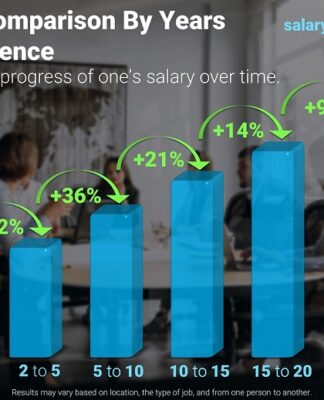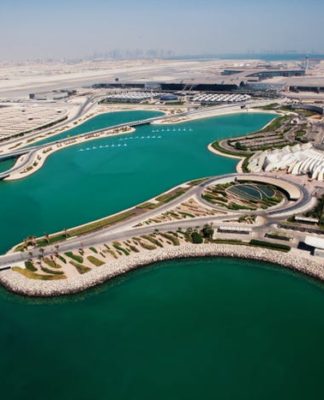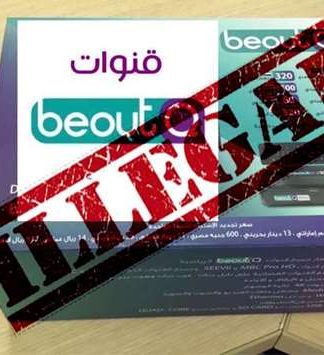In the 20th century, Russia was one of the main contenders in the Cold War arms race yet Russia is hardly relevant to the 21st century global tech race as nations compete for capital, investment, knowledge, and innovation at a time when change happens at the speed of a tweet.
That is just one of the startling findings to emerge from Global Finance’s ranking of national tech strength. To determine where a country stands in the global tech race, we used four integrated metrics, three of which serve as standard measures of the availability and prevalence of technology: internet users as a proportion of the population; smartphone users as a percentage of the population; and LTE users as a percentage of the population. The fourth metric we used is a Digital Competitiveness score developed by the IMD World Competitiveness Center. Their competitiveness score focuses on technological knowledge, readiness for developing new technologies, and the ability to exploit and build on new innovations.
Ranking nations according to these metrics produced interesting results. For example, smaller advanced countries seem to score better than larger ones—Hong Kong and Taiwan are both ranked above Japan, the country that produced game-changing inventions like the Nintendo, the Walkman, and the VCR. This is likely due to the fact that smartphone penetration is higher in Hong Kong and Taiwan. In Hong Kong, approximately 97% of internet searches are done on smartphones, indicating their prevalence.
Another surprising finding is that Kazakhstan, a developing country with a population of only 18 million and a GDP per capita of $8,830, ranks above Italy, China, and Saudi Arabia. This seems shocking considering that Kazakhstan has a much smaller and less developed economy. However, Kazakhstan’s government announced a strategy in 2012 emphasizing technological innovation and investment as a part of its overall mission to become an advanced country. The government expanded internet access and smartphone penetration while working to improve its digital competitiveness, thus giving it a relatively strong score.
Perhaps the biggest or most shocking anomaly is Russia’s poor showing, being ranked 47th out of the 67 countries on the list. Russia does poorly across all metrics, with low scores on smartphone penetration as well as digital competitiveness. In fact, Ukraine is ranked two slots above Russia despite having a GDP 14 times smaller. Perhaps this is because Ukraine long served as a technological hub of the former USSR and currently structures its education and business interests towards promoting its information technology sector.
Some of the rankings are less surprising. Every one of the top 20 countries has a developed economy and European countries with advanced economies lead the pack, making up four of the top five most technologically advanced. However, Asian countries including the U.A.E, Singapore, Hong Kong, and South Korea are all in the top 12, giving the top players in the global tech race a measure of geographic diversity.
| Global Finance Ranking of National Tech Strength |
|---|
| Ranking | Country | Composite Score |
| 1 | Norway | 3.682965 |
| 2 | Sweden | 3.681769 |
| 3 | Netherlands | 3.677732 |
| 4 | Denmark | 3.666274 |
| 5 | United States | 3.65128 |
| 6 | Singapore | 3.618698 |
| 7 | Finland | 3.590665 |
| 8 | United Arab Emirates | 3.587424 |
| 9 | South Korea | 3.552165 |
| 10 | Hong Kong | 3.550809 |
| 11 | Switzerland | 3.550804 |
| 12 | United Kingdom | 3.493129 |
| 13 | Belgium | 3.486736 |
| 14 | Canada | 3.468602 |
| 15 | Australia | 3.400257 |
| 16 | Luxembourg | 3.39885 |
| 17 | Taiwan | 3.37134 |
| 18 | Spain | 3.339395 |
| 19 | Germany | 3.331451 |
| 20 | Estonia | 3.312652 |
| 21 | Japan | 3.277817 |
| 22 | France | 3.272701 |
| 23 | New Zealand | 3.239487 |
| 24 | Ireland | 3.235211 |
| 25 | Austria | 3.230004 |
| 26 | Qatar | 3.216313 |
| 27 | Lithuania | 3.202866 |
| 28 | Czech Republic | 3.184814 |
| 29 | Israel | 3.131437 |
| 30 | Latvia | 2.994696 |
| 31 | Malaysia | 2.987913 |
| 32 | Portugal | 2.966322 |
| 33 | Slovenia | 2.949676 |
| 34 | Poland | 2.937988 |
| 35 | Hungary | 2.930656 |
| 36 | Kazakhstan | 2.92409 |
| 37 | Italy | 2.888797 |
| 38 | China | 2.82051 |
| 39 | Croatia | 2.804712 |
| 40 | Thailand | 2.8023 |
| 41 | Slovakia | 2.757885 |
| 42 | Saudi Arabia | 2.756118 |
| 43 | Greece | 2.698966 |
| 44 | Ukraine | 2.68495 |
| 45 | Jordan | 2.684056 |
| 46 | Russia | 2.683851 |
| 47 | Argentina | 2.678766 |
| 48 | Romania | 2.665403 |
| 49 | Chile | 2.582911 |
| 50 | Mexico | 2.509091 |
| 51 | Bulgaria | 2.495615 |
| 52 | Turkey | 2.46682 |
| 53 | Iran | 2.334855 |
| 54 | Philippines | 2.317305 |
| 55 | Brazil | 2.308031 |
| 56 | Vietnam | 2.301261 |
| 57 | Peru | 2.296431 |
| 58 | Morocco | 2.276783 |
| 59 | Colombia | 2.246969 |
| 60 | India | 2.223931 |
| 61 | South Africa | 2.211977 |
| 62 | Indonesia | 2.079112 |
| 63 | Venezuela | 1.65962 |
| 64 | Algeria | 1.643397 |
| 65 | Egypt | 1.602698 |
| 66 | Myanmar | 1.600593 |
| 67 | Pakistan | 1.567116 |
Methodology
After compiling the data, 37 countries had data filled in for all four metrics, 30 countries had data filled in for three metrics, and 36 countries had data filled in for two metrics. Once we obtained this raw data, we used statistical tools to equally weight all four variables. We did this by ensuring that the standard error of all the variables are equal. After that, we did a simple equation of adding up all the scores. This provided us a range where a 4 represents the highest technological strength and 0 means the absolute lowest.
We decided to only use countries that had data filled in for three metrics or more to ensure accurate analysis. For the countries with only three metrics, we used linear regression analysis to predict and fill in the missing metric. We did not do this for countries with only two metrics because the margin of error would have been too large. Based off of these scores, we ranked the countries so that their ranking was representative of their scores across all the metrics.
Source:gfmag.com






























